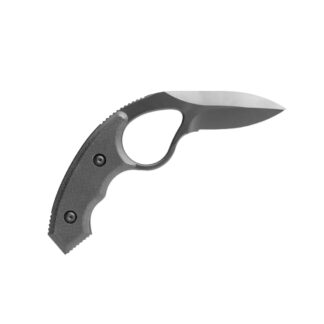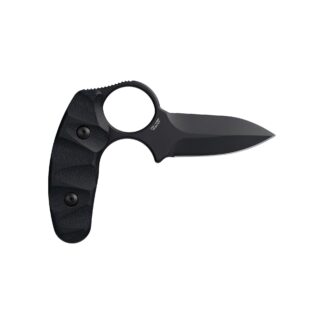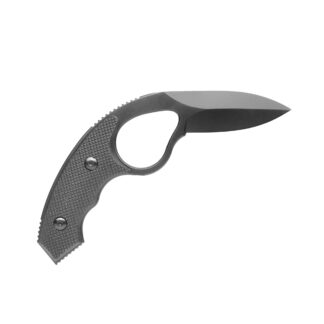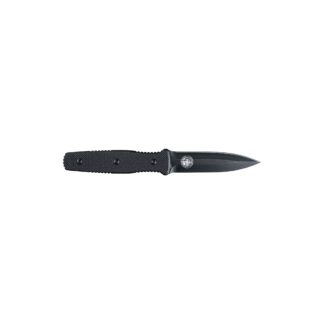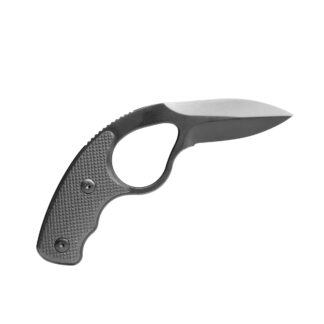Colonel Blades® FAQs
Your questions answered
What constitutes a fixed blade survival knife?
A fixed blade survival knife is distinguished by its non-folding design, featuring a solid blade that extends directly from the handle. This design choice enhances the knife's strength and durability, crucial for demanding outdoor tasks. Full tang construction, where the blade extends through the entire handle, further reinforces the knife's robustness, reducing the risk of breakage during heavy use. The blade of a survival knife is designed to be versatile, with a sharp point for piercing, a sturdy spine for chopping, and a sharp edge for cutting tasks. The handle is ergonomically designed for a comfortable and secure grip, often with textured surfaces to prevent slipping. Made from durable materials like stainless steel or carbon steel, survival knives are built to withstand harsh conditions and maintain sharpness.
Why choose a fixed blade over a folding knife for survival?
Opting for a fixed blade over a folding knife in survival scenarios offers distinct advantages. They are versatile and adept at a wide range of outdoor tasks such as cutting, chopping, and hunting. Maintenance is simpler with fixed blades, as their non-collapsible design reduces the risk of rust or damage. In emergencies, they provide quick deployment without unfolding, enhancing efficiency. Their stronger lockup and reduced risk of accidental closure also improve safety during heavy use.
What features should I look for in a survival knife?
When selecting a survival knife, prioritize features like full tang construction for durability and strength. Choose a high-quality blade material such as stainless or carbon steel for sharpness and corrosion resistance. Look for a versatile blade design with a sharp point, sturdy spine, and sharp edge for various tasks. Opt for an ergonomic handle with a secure grip, preferably textured for slip resistance. Ensure the knife comes with a durable sheath for convenient carry. Consider the size and weight for usability without sacrificing portability.
How do I maintain my fixed blade survival knife?
To maintain your fixed blade survival knife, clean it after use with mild soap and water, then dry thoroughly to prevent rust. Apply lubricant to the blade to keep it smooth and rust-free. Regularly sharpen the blade and store the knife in a dry, cool place with a protective cover. Check for wear and address any issues promptly to maintain its performance and durability.
Can a fixed blade knife be used for self-defense?
Yes, a fixed blade knife can be used for self-defense. Its solid and sturdy construction, typically with full tang design and strong blade material, makes it effective for defensive purposes. The fixed blade allows for quick deployment and provides a reliable tool for close quarters combat or defending against threats. Additionally, the ergonomic handle design and secure grip enhance control and maneuverability during self-defense situations.
How important is the length of the blade for a survival knife?
The blade length of a survival knife is crucial, balancing between the advantages of longer and shorter blades. A longer blade is efficient for heavy-duty tasks like chopping or cutting but may lack maneuverability. On the other hand, a shorter blade offers greater control and versatility for finer tasks but may require more effort for heavy cutting. Choosing the right blade length depends on your specific needs and the tasks you expect to encounter in survival situations.
Is the thickness of a survival knife blade important?
Yes, the thickness of a survival knife blade plays a crucial role in its performance. Thicker blades offer enhanced strength and durability, making them suitable for heavy-duty tasks such as chopping and prying. However, they can be heavier and less nimble for tasks requiring precision or detailed cutting. Thinner blades, while less robust, provide greater control and are ideal for tasks like carving, slicing, and food preparation. Choosing the right blade thickness depends on balancing durability with the specific tasks you expect to encounter in survival situations.
What is the best way to carry a fixed blade survival knife?
The best way to carry a fixed blade survival knife depends on personal preferences and the intended use of the knife. A popular option is a belt sheath, providing convenient access by securely carrying the knife on your belt. Ensure the sheath fits snugly to prevent the knife from slipping or falling out. If using the knife as part of a tactical setup, consider a MOLLE-compatible sheath for attachment to gear like backpacks or vests. Some may prefer a boot sheath for concealed carry, especially in urban environments. Horizontal carry options, such as a belt sheath or shoulder harness, can also be comfortable and accessible, particularly in tight spaces or when sitting.
